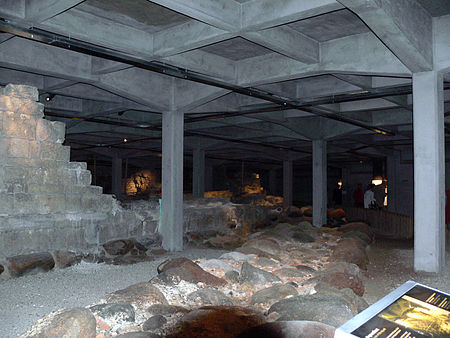Absalon's Castle

Absalon's Castle, (Danish: Absalons borg) was a fortification on the island of Slotsholmen in Copenhagen, located at the site of the later Copenhagen Castle and Christiansborg Palace. According to the chronicler Saxo Grammaticus, the castle was founded by Bishop Absalon in 1167 to protect the emerging city of Copenhagen. The castle survived for 200 years before it was destroyed in 1369 by the Hanseatic League, who first occupied and plundered it, and then demolished it completely. The castle was made up by a curtain wall, encircling an enclosed courtyard with several buildings such as the bishop's residence, a chapel and several minor buildings. The ruins of Absalon's Castle can be seen today in the subterranean excavations under Christiansborg Palace.
Excerpt from the Wikipedia article Absalon's Castle (License: CC BY-SA 3.0, Authors, Images).Absalon's Castle
Christiansborg Ridebane, Copenhagen Christianshavn
Geographical coordinates (GPS) Address Phone number Nearby Places Show on map
Geographical coordinates (GPS)
| Latitude | Longitude |
|---|---|
| N 55.676388888889 ° | E 12.580555555556 ° |
Address
Christiansborg Slot (Folketinget)
Christiansborg Ridebane
1218 Copenhagen, Christianshavn
Capital Region of Denmark, Denmark
Open on Google Maps










